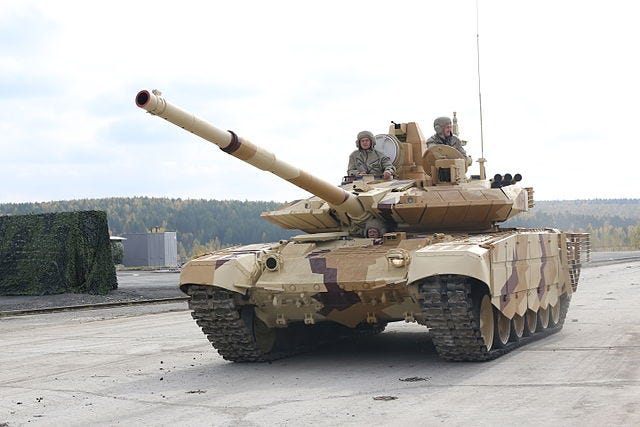Indirect Fire from a Tank
The War in Ukraine (2014-2023)
A video posted on the official English-language Telegram channel of the Russian Ministry of Defense on 7 March 2013, shows a T-90 main battle tank1 being used as a “roving gun.” Operating alone, it moves from one position to another, firing one round at each stop in response to information provided by an unseen forward observer. The text provided with the video praises the “reconnaissance operator” for performing his mission despite a “mortar shelling.”2
The video is clearly a work of propaganda. For one thing, the production values are such that there is no doubt that the people who made it were professional film makers. (The cinematography cannot compete with that of Dr. Zhivago, but it borders on the beautiful.) For another, the elegance of the technique employed counter-acts the oft-repeated narrative that the tactics used by Russian forces in Ukraine descend from those depicted in the first scene of Enemy at the Gates.
Nonetheless, a student of tactics can learn much from the careful observation of propaganda. Indeed, given the original purpose of most of available pictures (moving or otherwise), the interpretation of images created for political purposes is an essential skill for anyone who is trying to make sense of the fighting methods of the past.
Lest any reader be embarrassed, professionally or otherwise, by an inadvertent visit to an official Russian website, I will refrain from providing a link to this post. However, for those who wish to see the video, I offer a screen shot of its URL.
For more about roving guns, and the use of tanks as a means of delivering indirect fire, see the following posts from the Tactical Notebook.
The photo of the T-90 tank at the top of this post is made available through a Creative Commons license.
When writing in English, Russians often use the word “mortar” to designate weapons, such as rocket launchers, that bear little resemblance to devices descended from the handiwork of Sir Wilfred Stokes.





